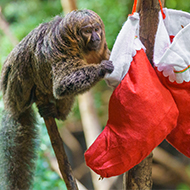Hard physical work may lead to an early death
Researchers have found that female Komodo dragons have half the life-span of males on average, due to physically demanding "housework", such as building big nests.
The Komodo dragon, which is native to eastern Indonesia, is the world's largest lizard species.
A team of scientists from the University of Melbourne, Australia, Indonesia and Italy studied 400 individuals over 10 years in eastern Indonesia, in an effort to assist the endangered species' conservation.
Male Komodos are bigger and live to around 60 years old, compared to the smaller female, which generally lives to around 32 years old, the study found.
Dr Tim Jessop, from the Department of Zoology at the University of Melbourne and co-author of the study, said: "The sex-based difference in size appears to be linked to the enormous amounts of energy females invest in producing eggs, building and guarding their nests.
"The process can take up to six months during which they essentially fast, losing a lot of weight and body condition."
The study, which has been published in the PLoS ONE journal, provides information about the species' growth rate, lifestyle and population.
Scientists say the consequences of females having half the life-span is probably why males are the world's largest lizards - because of the competition over the remaining females - and one of the main reasons the species is threatened.
Dr Jessop added: "Males and females start off at the same size until they reach sexual maturity at around seven years of age. From then on females grow slower, shorter and die younger."







